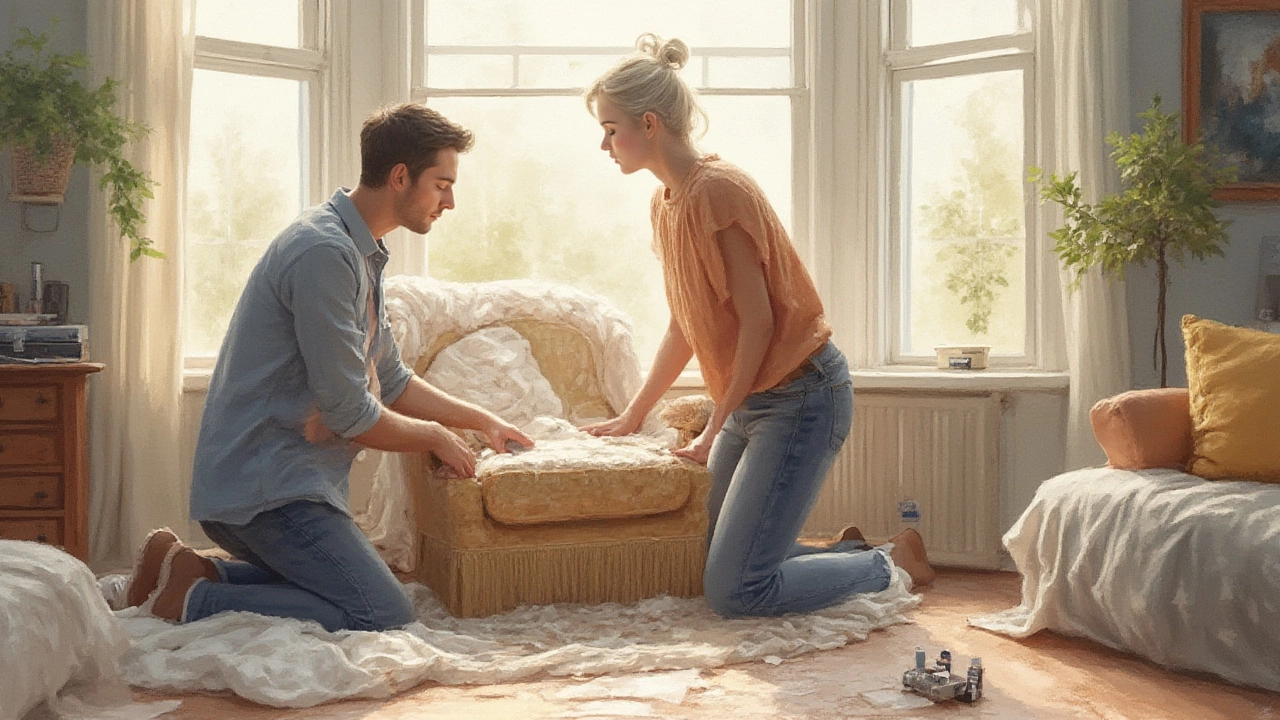Wondering how to store furniture the right way? Learn practical tips for choosing, protecting, and arranging your furniture—without the stress.
Protect Furniture with Easy Everyday Tips
Most of us love our sofas, tables and chairs, but daily life can take a toll on them. A coffee spill, a pet’s claws or harsh sun can make a piece look old fast. The good news is you don’t need a costly makeover to keep everything looking fresh. With a few smart habits you can extend the life of every item in your home.
Everyday Protection Hacks
Start with the obvious: use coasters and placemats. A simple cork coaster stops water rings on wood tables, while a vinyl mat shields a dining surface from hot plates. It takes seconds to set up and saves you from expensive refinishing later.
Furniture legs that touch the floor are vulnerable to scratches. Slip a felt pad under each leg. The pads are cheap, easy to replace, and they prevent marks on hardwood or carpet.
Sunlight fades fabrics and bleaches wood. Arrange large pieces away from direct windows, or hang a lightweight curtain to filter the light. If you can’t move the item, use a UV‑blocking window film – it’s a quick fix that doesn’t change the look of the room.
Pets love to curl up on sofas, but their claws can shred upholstery. A washable slipcover or a low‑pile throw gives them a comfy spot while keeping the original fabric safe. When the cover gets dirty, just toss it in the wash.
Spills happen, especially in the kitchen. Keep a small bowl of mild soap and a clean cloth handy. Dab the spill immediately – don’t rub, because rubbing pushes the liquid deeper into the fibres. For leather, use a leather‑friendly cleaner to avoid damage.
Long‑Term Care for Furniture
Cleaning on a schedule makes a big difference. Dust wood surfaces weekly with a soft cloth, then polish with a product made for that finish. For fabric sofas, vacuum the cushions every month to pull out dust and pet hair.
When you need to move a heavy piece, never drag it across the floor. Lift it onto a moving blanket or a set of sliders. The effort saves both the floor and the furniture legs from dents and scratches.
Re‑upholstering or refinishing is expensive, so treat the finish as if it were a paint job. Avoid placing hot items directly on wood or glass tables – always use a heat‑proof pad.
Seasonal changes can affect humidity levels, especially for wooden furniture. In dry winters, place a humidifier nearby or use a water tray on the heater. This prevents the wood from cracking or warping.
Finally, store seasonal items properly. When you tuck away a set of outdoor chairs for winter, wrap them in a breathable cover and keep them in a dry area. The same rule applies to indoor pieces you won’t use for a while.
By adding these small steps to your routine, you’ll notice your furniture staying brighter, stronger and more comfortable for years. It’s not about big projects – it’s about the tiny actions that add up. Protect your furniture today and enjoy a home that feels new, day after day.
